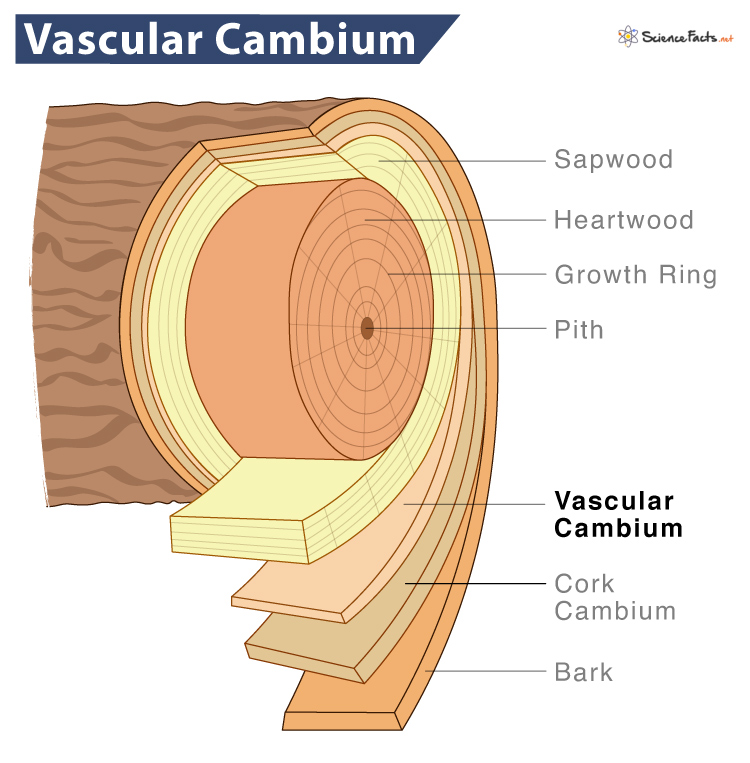Vascular Cambium
The inside of plants is surrounded by the endodermis and consists of the xylem, phloem, and vascular cambium. The vascular cambium is mainly responsible for the secondary growth of the plant. In contrast to apical meristems in root and shoot tips, vascular cambium give rise to lateral meristems.
They are closely intertwined with the xylem and phloem of the vascular bundle. However, it does not transport water, minerals, or food through the plant.
Location of Vascular Cambium in Plants
It is found only in herbaceous, flowering dicots, woody plants, and seed-producing gymnosperms but not in monocots, which lack secondary growth. Vascular Cambium may also exist in the needles of coniferous plants.
In herbaceous plants, it arises in the vascular bundles, often arranged like beads on a necklace forming inside the stem. However, in woody stems, it forms a cylinder of undifferentiated meristem cells as a continuous ring which later gives rise to new tissues.
Structure of Vascular Cambium in Plants
It is an elongated, cylindrical-shaped cell that varies in thickness from around six cells during dormant periods to almost 14 cells during the most active growth periods. It has different structures in herbaceous and woody plants.
The vascular cambium usually consists of two cell types: fusiform initials (tall, axially oriented) and ray initials (smaller and round to angular in shape).
In young, herbaceous plants, vascular cambium occurs in bundles with xylem and phloem, forming a ring of an uninterrupted cell. In contrast, in woody plants, it forms the cambium ring separating the xylem and phloem. It is also called the bifacial vascular cambium because it helps plant growth in two directions: producing the inner layer of bark outside and forming the wood inwards.
How is its Supply Maintained
The divisions of cells in the vascular cambium help to maintain its supply. When the cells divide, one of the divided cells differentiates but the other cell remains meristematic. This cell further divides, forming an interrupted supply of vascular cambium.
Functions of Vascular Cambium
Main Role
- Producing the vascular tissues (xylem and phloem) that help conduct water and minerals within the plant
- Initiating secondary growth at the lateral meristems, thus increasing the thickness or girth of the stem and roots of the plant
Other Purpose
- Producing lignified cells and thus providing the structural support along with the cork cambium
- Preventing the entry of pathogens and protecting against external injuries
-
References
Article was last reviewed on Monday, November 14, 2022




